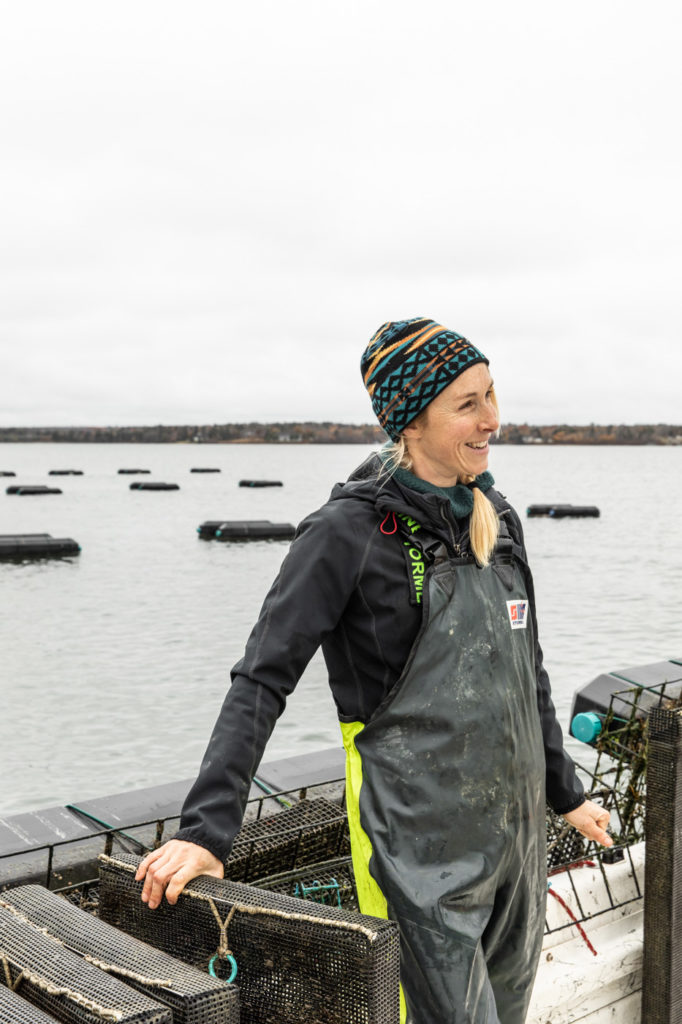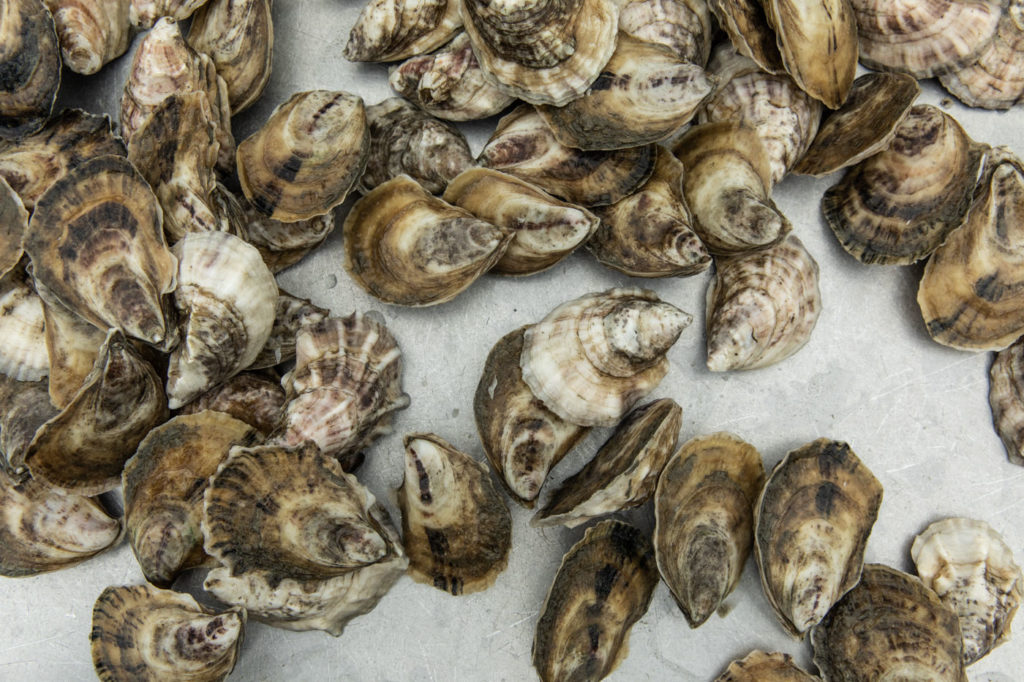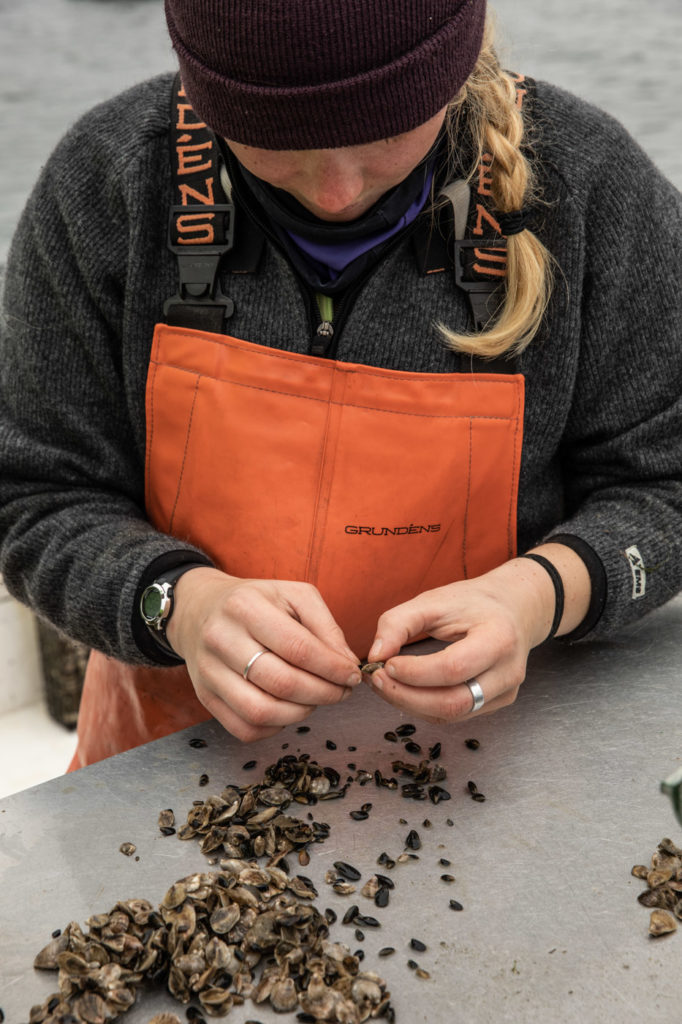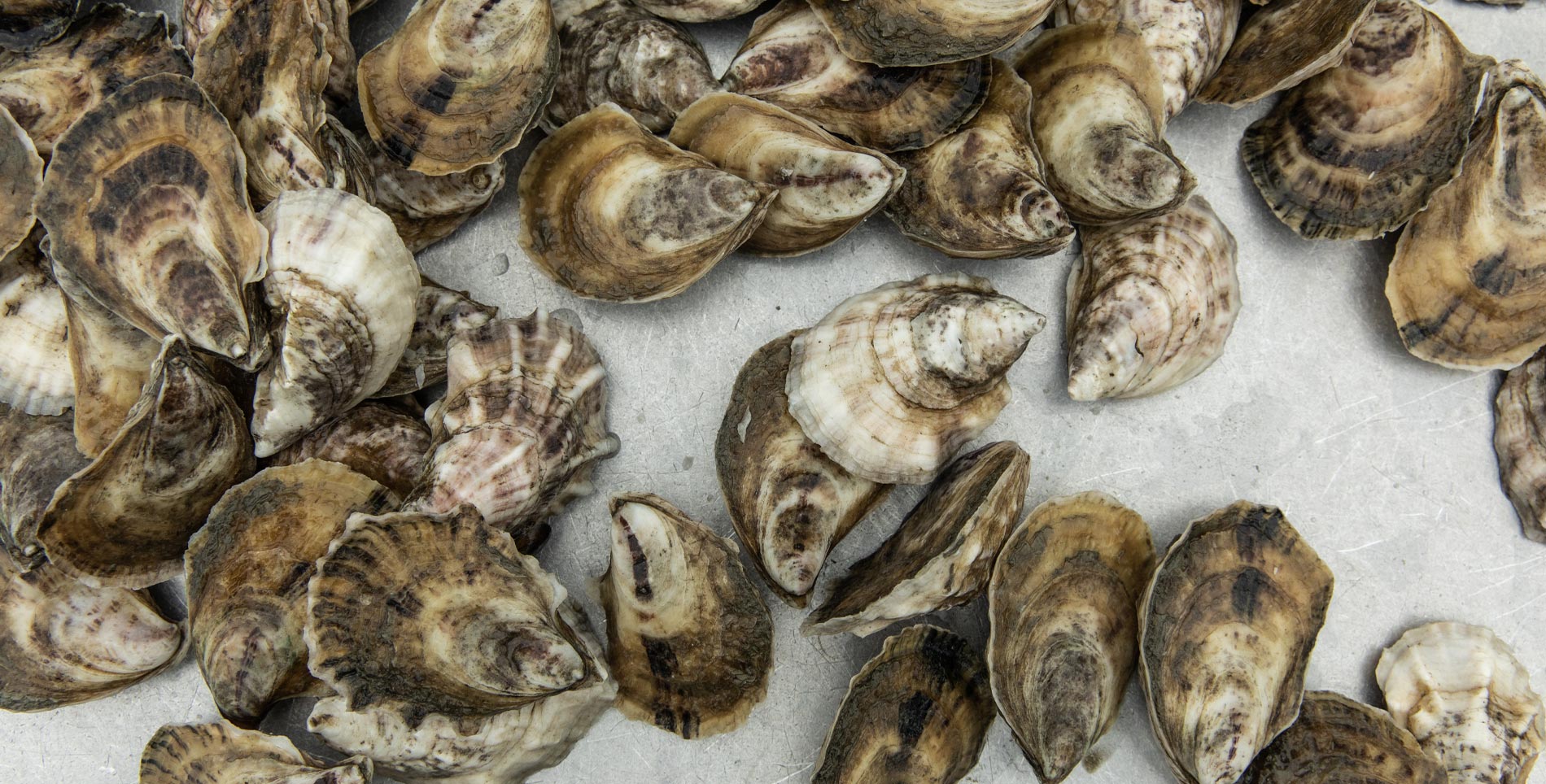In Mt. Desert Island, Maine, customers duck into the Bar Harbor Oyster Co. workshop. Inside, they reach into the fridge for a bag, deposit cash in a nearby jar, and leave with a dozen Bar Harbor Blondes in hand. These oysters are headed not for restaurants, but to home kitchens where they’ll be shucked and slurped with lemon, tasting of the Atlantic.
A wave of restaurant closures followed in the wake of the first weeks of the coronavirus pandemic. Months later, even restaurants that have survived operate at a fraction of normal capacity. With shrinking wholesale orders and exports, demand for seafood delicacies all but dried up. But instead of calling it quits, many fishermen and women have opted instead to sell directly to consumers. And home cooks—with more time to spend in their kitchens than ever before—have risen to the challenge, gleefully shucking oysters and spooning out uni.
There’s a new tradition afoot, one in which foods previously relegated to white-clothed tables now appear in home-cooked meals. In a year marked by monotony and instability, faltering food systems and a rising commitment to eating locally and seasonally, cooks have given sea delicacies a new home. The rise of direct-to-consumer sales is helping the fishing community ride out a devastating year while also deepening consumers’ commitment to local ingredients and producers.
___
Up and down the U.S. coasts, fishermen and women are expanding their markets to include direct-to-consumer sales, designing models of their own or selling through community-supported fisheries (CSF). And in cities like Santa Barbara and San Diego, fish markets are helping out, facilitating the connection between suppliers and seafood lovers.
In San Diego, lobster fishers turned to direct sales this year. Up until 2018, California exported 95% of its spiny lobster to China, but heavy tariffs imposed in late 2018 dampened demand for exports, and lobster fishers were left without markets. The additional challenges that followed the coronavirus outbreak—restaurant closures, heightened demand for local food—inspired lobster fishers to seek direct-to-consumer markets, and to launch a campaign aimed at expanding their local market. “The goal of the spiny lobster campaign is to help increase or strengthen direct markets between lobster fishermen and consumers,” says Theresa Talley, Coastal Specialist at California Sea Grant, who helps fishermen and women connect to the public through research, outreach and education.
In the case of Bar Harbor Oyster Co., a direct-to-consumer model grew slowly over the years before taking off in spring of 2020. Up until March, the aquaculture oyster farm in Mount Desert Island, Maine, relied on wholesale orders sprinkled with a few direct sales. But when customers could no longer order Bar Harbor oysters at restaurants, they came straight to the source. Oyster farmer and owner Joanna Fogg describes her sales model as “kind of country bumpkin.” Customers call, email, or just swing by the workshop. If Fogg is out at the oyster farm, customers pay through cash or Venmo using an honor system.

Fogg attributes the direct-sales uptick in part to COVID-19, as well as to a changing sentiment among Mainers about oysters’ desirability. While out-of-towners love Maine oysters, locals have been slower to come around. “We’re the last people to see anything except for the sunrise,” Fogg says. “My dad still won’t even try one. It’s not something we grew up eating.” But oysters are growing in population among locals, boosting Fogg’s direct sales.
Like Fogg, dabbling in direct sales before the pandemic allowed Stephanie Mutz to shift gears and take on a flood of direct orders last spring. Mutz is an urchin diver based in Santa Barbara, as well as California’s only female urchin diver. Within days of the initial restaurant closures, Mutz was fielding orders from three hundred to four hundred individuals. She had just days to restructure her sales model, which had previously catered to thirty to fifty restaurant chefs.
“We were overwhelmed,” she says. “It was all based on text messages and me putting them into an Excel spreadsheet. The first two weeks we learned what not to do.” While things have stabilized since then, home cooks still account for a significant portion of Mutz’s sales.



___
Get Hooked is a subscription-based CSF in Santa Barbara that delivers the day’s fresh catch directly from local fishers. Since its launch in 2018, Get Hooked has attracted customers who want to eat hyperlocal and with the seasons. After the pandemic hit, the business doubled its customer base in the span of six weeks. Co-founder Victoria Voss attributes this spike to a few factors. For one thing, customers wanted to support Santa Barbara’s local suppliers. For another, the subscription model allowed them to avoid grocery stores by retrieving orders at low-density pick-up sites or ordering straight to their door.
There was something intangible too; it was the thrill of receiving fresh-caught seafood in the midst of a pandemic. “It’s remarkable how much joy [our members] are finding in this, because it does really feel like so much has been stripped away,” Voss says. “When you get your special seafood that you get to do this gourmet thing with at home, there’s a juxtaposition between the world being really hard, and [having] this delight that feels very luxurious at the same time.”
Mutz noticed the same sentiment with her new customers. “Consumers wanted some kind of normalcy,” she says. “And they wanted a treat. And that’s what we have—a delicacy.”
Uni is indeed a delicacy. The interior meat of an urchin is frequently referred to as California Gold and has long been found in high-end restaurants served at a premium. Now, despite its mythic appeal and reputation as a luxury food, it’s become a favorite ingredient among adventurous home cooks. “We know these consumers are going out of their comfort zones, and we honestly couldn’t be more proud,” says Mutz.
While “nothing beats eating live uni straight out of its shell,” says home cook Brenda Ton, who has ordered from Mutz since 2017, she also adds uni to sushi handrolls, tops it over creamy scrambled eggs with toast, or pairs it with oysters and caviar. She tells me, “The one dish I always make when I get my hands on live sea urchin is uni carbonara—strands of pasta coated in a rich sauce of guanciale fat, egg yolks, and creamy, sweet uni.”
___
Working with unfamiliar ingredients in a home kitchen does not come without hiccups. “When you’re dealing with live seafood—whether it’s shellfish, lobsters, prawns—there’s more handling,” Voss explains. Home cooks often need education that wholesale or chef customers don’t require. Get Hooked pairs simple recipe suggestions with each delivery. Voss adds, “We always send a newsletter along with our seafood that tells folks all the tips and handling instructions that they need.”
Fogg’s education is more ad hoc. Many Maine locals grow up learning how to pick, cook and eat lobster, but despite a reputation as being some of the best in the world, most people aren’t familiar with how to keep, shuck and eat them.
To support customers even when she couldn’t host in-person demonstrations, Fogg started a YouTube channel with shucking tutorials. She’s texted videos and called customers to walk them through the process. “Demystifying the process of shucking and giving people a great product has definitely expanded our market,” she says. Plus, her willingness to hop on the phone and shuck over FaceTime delights customers.
___
Despite new models and creative approaches to educating consumers, one hurdle remains: seafood is expensive. So what do direct sales mean for access?
In most cases, a direct-to-consumer market drops the price on locally-caught seafood. The price may still be high compared to industrial seafood—these are small-scale, responsibly-sourced, high-quality products—but a direct market economically benefits both fisherman and customer. Talley estimates that before this year, San Diego’s lobstermen and women sold their catch at local fish markets for up to $26 a pound. Now that demand from China has dropped and they keep their catch local, Talley says, “they sell hundreds of pounds a week. The price off the boat is around $16 to $18 a pound. It’s still a little high for some people, but it’s a lot lower than in the past.”
Direct-to-consumer markets also increase the availability of local species. In Santa Barbara, 90% of the seafood caught in local waters leaves the city. Even at seafood-centric restaurants in coastal areas, it’s likely that the fish served didn’t swim in nearby waters. When customers have the option of purchasing directly from fishers, a whole world of local seafood opens up. In the case of spiny lobster, the plummeting demand from China means more product is available to local customers. Most of the catch now stays in Southern California, compared to just 5% in 2018.
The increased availability of sea delicacies over the past year has shifted consumer perspective. “I think they realize how much cheaper and fresher and better quality it is to buy directly from fishermen,” Mutz says. “People are starting to realize what it takes to get their seafood in a responsible way. And consumers are starting to understand and appreciate this—the quality, the sustainability.”
___
Selling directly to home cooks isn’t a fix-all solution for fishers. Customer service is time-consuming and most just want to get back to fishing. But for many fishermen and women, selling their catch straight to consumers will continue to provide at least one avenue of revenue.
“This model of direct sales is such a nice arrangement,” says Talley. “I think there’s a need for imports and exports, but for the fishermen to come in and even sell 10% of their total catch direct—they get a little more money and the consumer gets a better deal, because every time seafood passes hands the price goes up.”
Talley also points to the social benefits of direct sales. The model facilitates a connection between consumers and the people who catch and harvest their food. It creates a traceable food pathway, reliance on and care for the local ocean, and a sense of local abundance. “When you connect with and appreciate what’s harvested locally, it helps build your sense of pride and your sense of place,” she explains.
For enthusiasts who seek out delicacies like uni and oyster, buying directly and learning to prepare them at home offers a viable alternative to ordering at restaurants. The direct sales model also gives home cooks the opportunity to support local suppliers when restaurants can’t provide the same market as before. By bringing local seafood into the kitchen, home cooks strengthen food systems and explore new ways of eating—and that’s a tradition worth keeping.







Our comments section is for members only.
Join today to gain exclusive access.